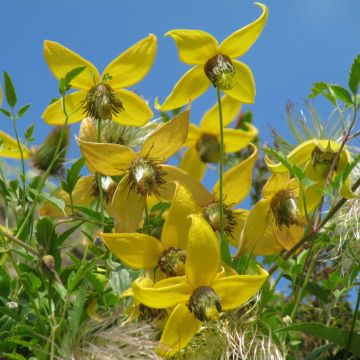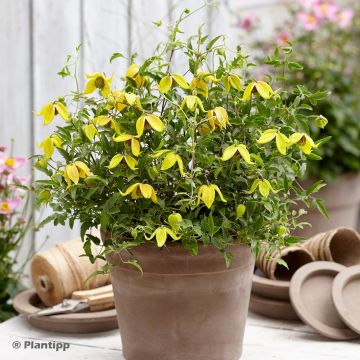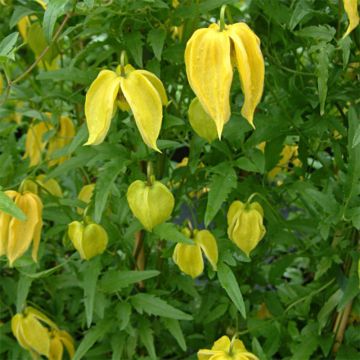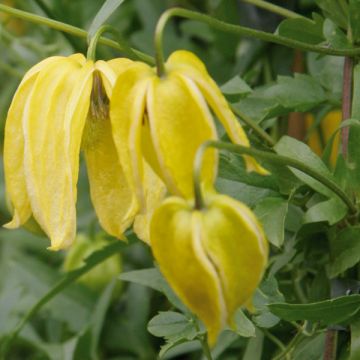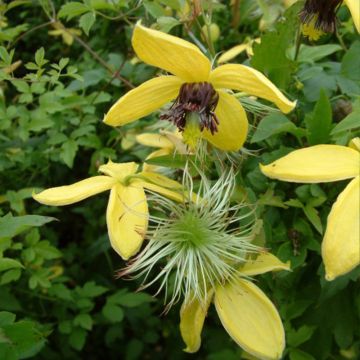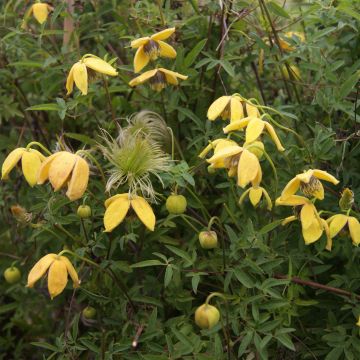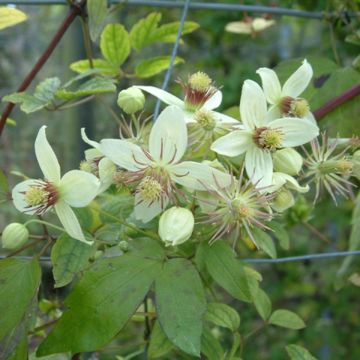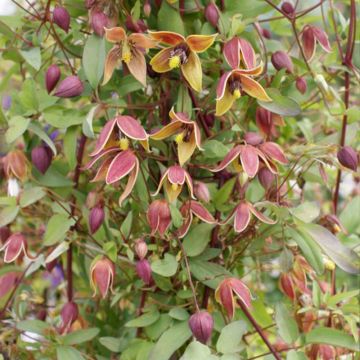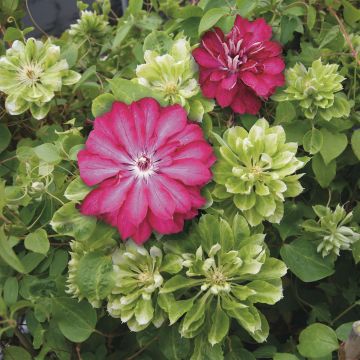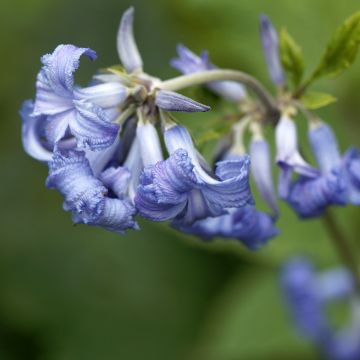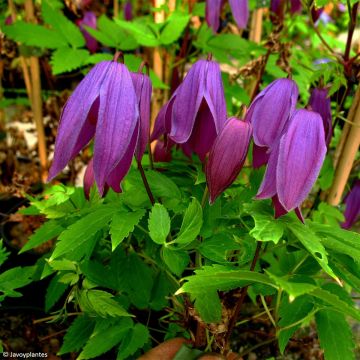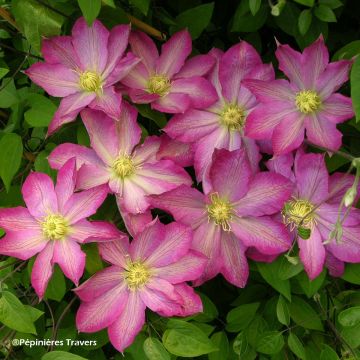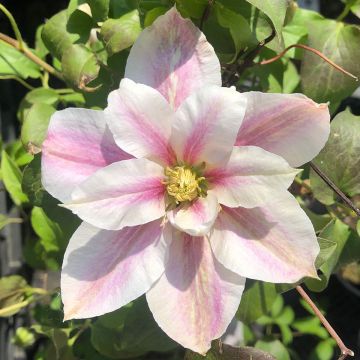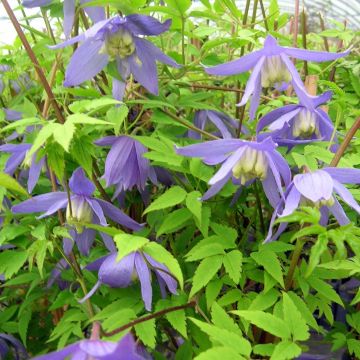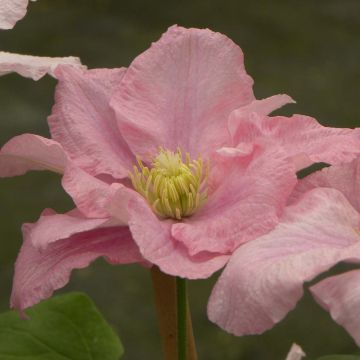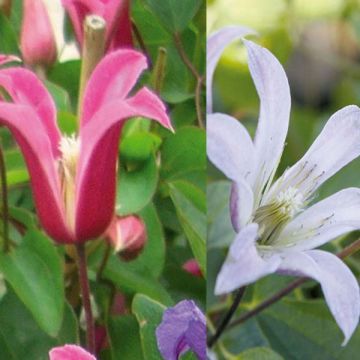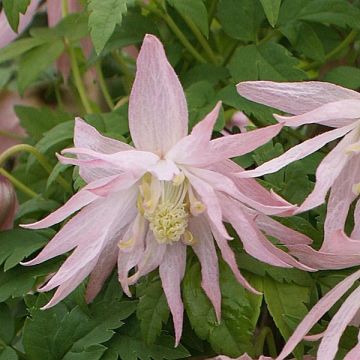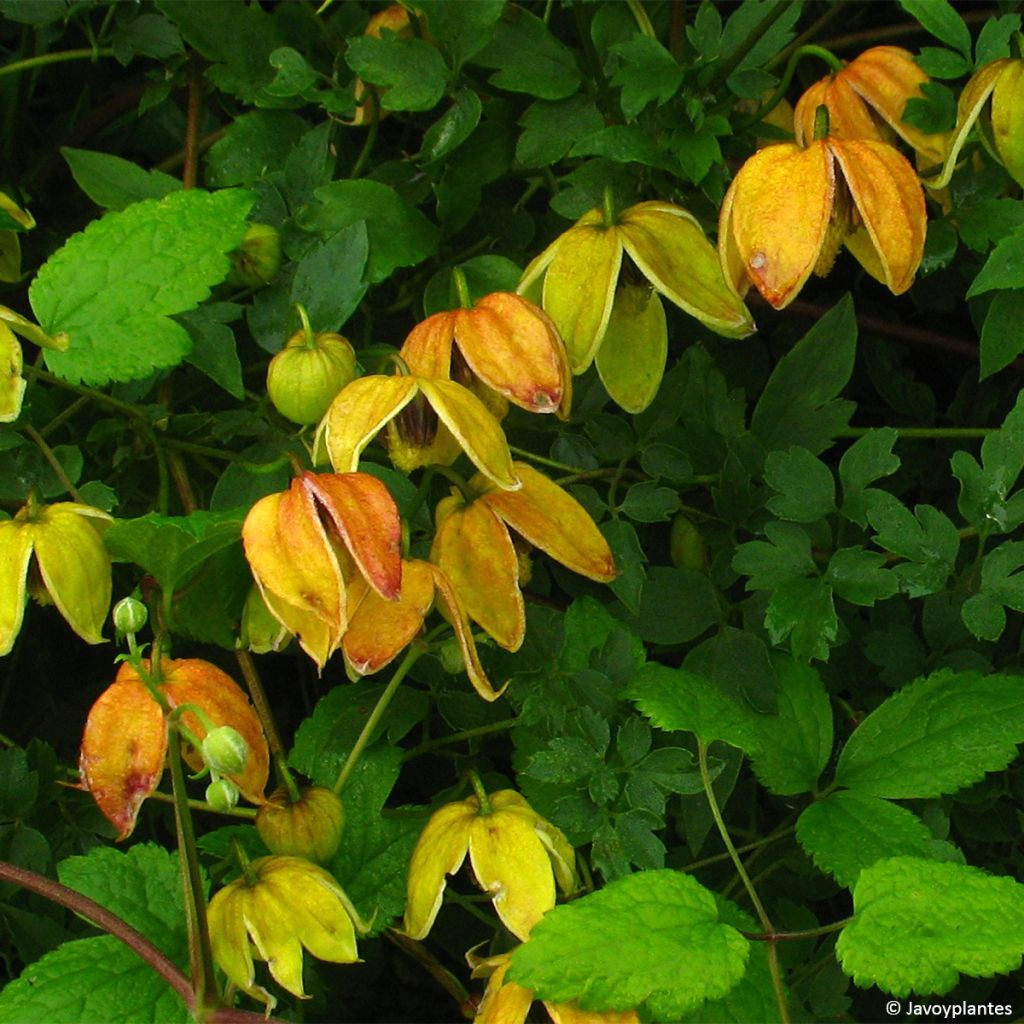

Clematis tangutica Red Balloon
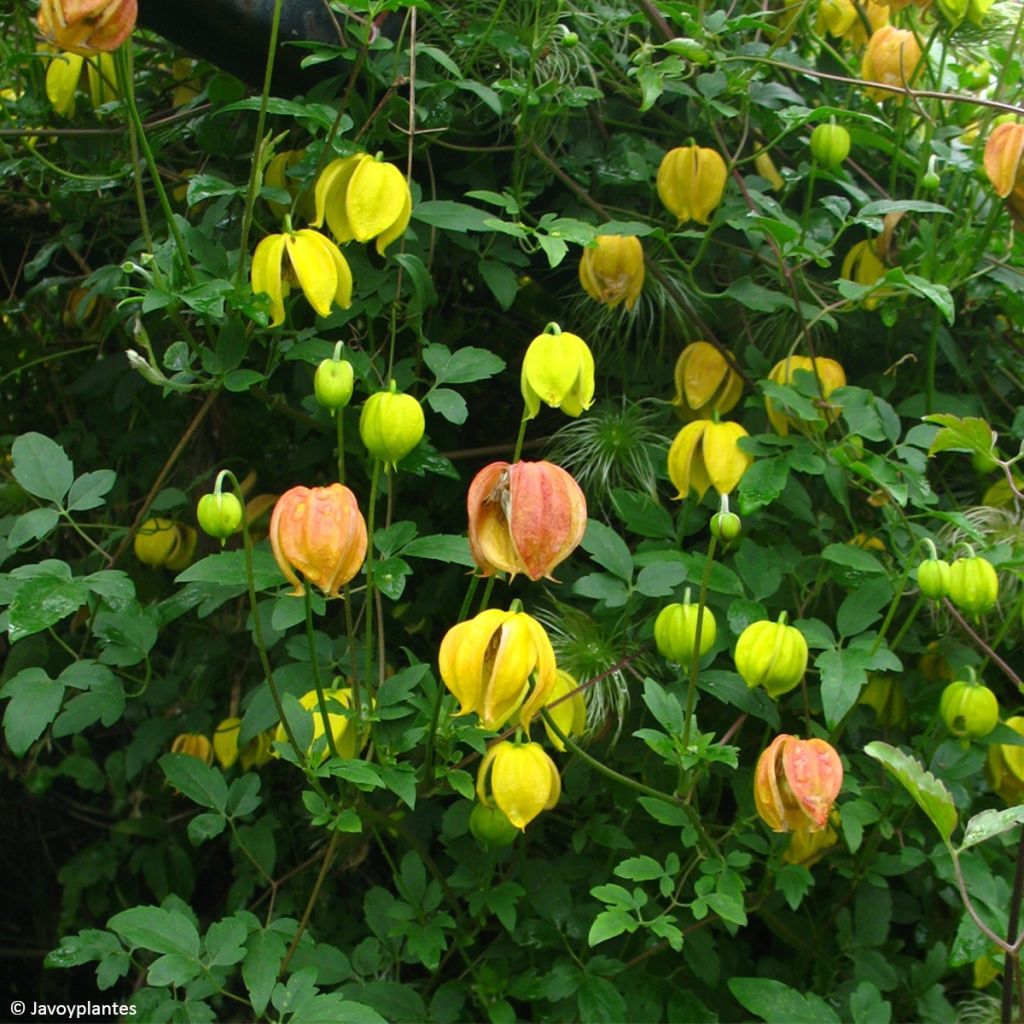

Clematis tangutica Red Balloon
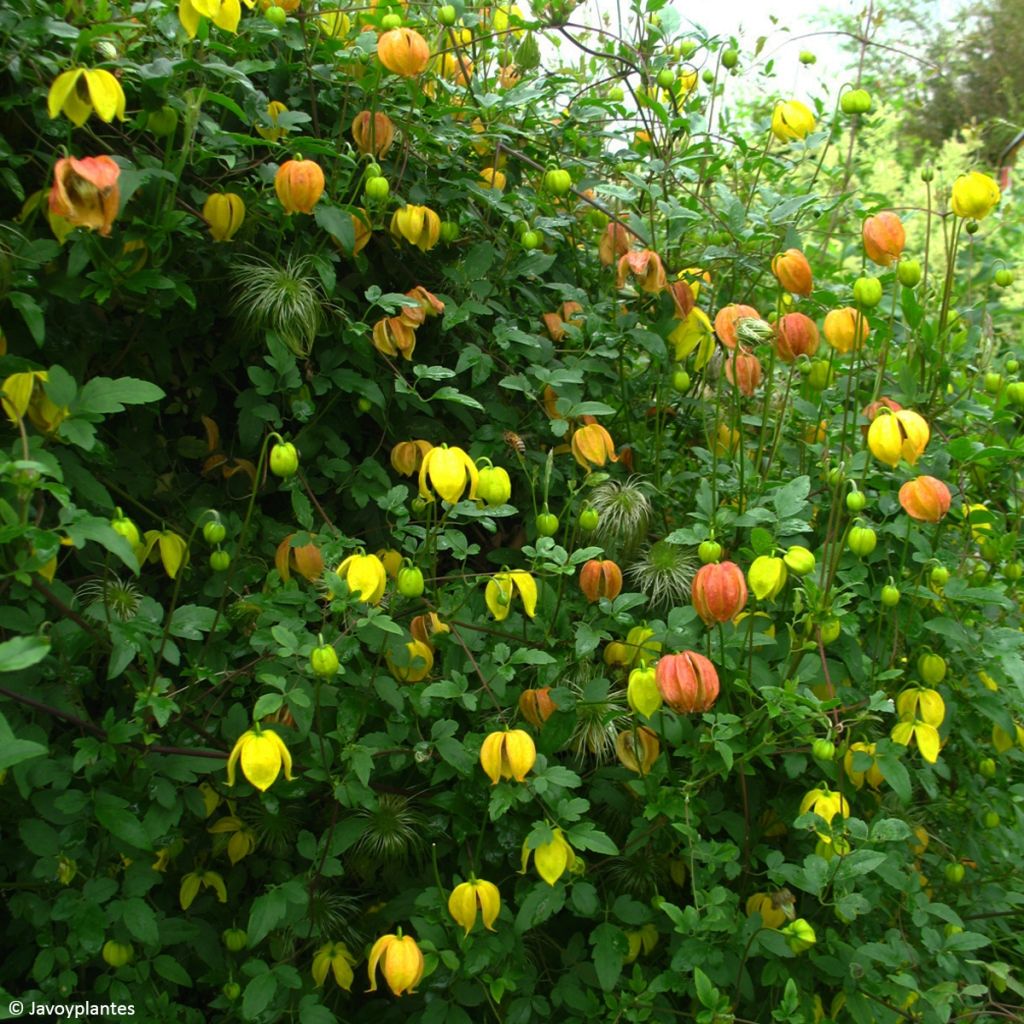

Clematis tangutica Red Balloon
Clematis tangutica Red Balloon
Clematis tangutica Red Ballon
Why not try an alternative variety in stock?
View all →This plant carries a 6 months recovery warranty
More information
We guarantee the quality of our plants for a full growing cycle, and will replace at our expense any plant that fails to recover under normal climatic and planting conditions.
From €5.90 for pickup delivery and €6.90 for home delivery
Express home delivery from €8.90.
Does this plant fit my garden?
Set up your Plantfit profile →
Description
Clematis 'Red Balloon' is a climbing variety that is very sturdy, vigorous, and disease-resistant. It boasts curious flowers shaped like small balloons that open into yellow bells with a tinge of reddish-brown on the outside. Its light foliage with toothed leaflets is also decorative, as are its feathery and silvery fruits that persist on the plant throughout winter. This hardy plant is useful for concealing an unattractive small structure, a fence, or a bank. It also works well climbing over a bush.
The genus Clematis belongs to the Ranunculaceae family. Clematis 'Red Balloon' is a horticultural hybrid obtained in Germany in 1996. One of its ancestors is the botanical species Clematis tibetana var. vernayi, originating from the Himalayas. 'Red Balloon' is a climbing plant with woody roots and voluble stems. It is particularly hardy, sturdy, and floriferous. It blooms on the current year's growth. It forms a dense bush that can reach 3 to 4m (10 to 13ft) in height and 2m (7ft) in width within a few years. Flowering begins in June-July, has a resting period, and then resumes until the end of September, or even until the first frosts. The flower buds are solitary and grouped in clusters. They are borne on long peduncles in the axils of the leaves. They are spherical and light green in colour. They open into flowers measuring 3 to 4cm (1 to 2in) in diameter, resembling Chinese lanterns, composed of 4 bright yellow sepals that darken to a deep yellow over time. Before withering, they take on a slightly lumpy appearance like orange skin and a beautiful orange-red to brownish hue. The flowering is followed by the formation of silvery and feathery fruits, in the shape of decorative pompoms. The light foliage is composed of leaves divided into 2 or 3 thin and deeply toothed leaflets, with a slightly bluish-green colour. The plant loses its foliage in winter.
Plant Clematis 'Red Balloon' on both sides of the support to be covered. Its prolonged and rather late flowering will go well with the purplish foliage of the dyer's vine and the blue flowers of C. 'Blue Eclipse', for example. It can also accompany the fragrant bouquets of yellow or white climbing roses. When left free and without support, this clematis will form a thicket adorned with beautiful yellow bells. Plant it alongside the blue-purple bells of C. 'Rooguchi' or those of C. 'Perle d'Azur', for example. It is easy to grow in full sun or partial shade, in fertile and well-drained soil.
Report an error about the product description
Plant habit
Flowering
Foliage
Botanical data
Clematis
tangutica
Red Ballon
Ranunculaceae
Cultivar or hybrid
Other Clematis Tangutica
Planting and care
It tolerates mountain or continental climates quite well. It will appreciate sunny exposures, as well as the dappled shade of a deciduous tree in summer. Plant it in deep, fertile, humus-rich, well-drained soil, shading the roots and base of the stem (with a flat tile, for example). Clematis often wilts in overly wet soil, but the tangutica group of clematis is more resistant to diseases.
Work the soil to a depth of 20cm (8in), lightened with good quality compost. Plant it by covering the root ball with 3cm (1in) of soil. After planting, cut back the clematis shoots to about 30cm (12in) above a pair of buds. Water regularly and generously during the first few weeks. Do not overwater, as stagnant water can lead to the development of fungus at the base of the plant.
Mulch in February with garden compost or well-rotted manure, avoiding direct contact with the stems.
Train the stems, without squeezing them, until the plant can cling on its own. Clematis also like to grow freely on neighbouring plants.
After a few years, cover the base of your climbing clematis with a small mound of soil to reduce the risk of wilting and encourage new shoots.
Voles and grey worms can attack clematis and devour the stems. Aphids and greenhouse whiteflies are also potential pests.
Planting period
Intended location
Care
This item has not been reviewed yet - be the first to leave a review about it.
Clematis
Haven't found what you were looking for?
Hardiness is the lowest winter temperature a plant can endure without suffering serious damage or even dying. However, hardiness is affected by location (a sheltered area, such as a patio), protection (winter cover) and soil type (hardiness is improved by well-drained soil).

Photo Sharing Terms & Conditions
In order to encourage gardeners to interact and share their experiences, Promesse de fleurs offers various media enabling content to be uploaded onto its Site - in particular via the ‘Photo sharing’ module.
The User agrees to refrain from:
- Posting any content that is illegal, prejudicial, insulting, racist, inciteful to hatred, revisionist, contrary to public decency, that infringes on privacy or on the privacy rights of third parties, in particular the publicity rights of persons and goods, intellectual property rights, or the right to privacy.
- Submitting content on behalf of a third party;
- Impersonate the identity of a third party and/or publish any personal information about a third party;
In general, the User undertakes to refrain from any unethical behaviour.
All Content (in particular text, comments, files, images, photos, videos, creative works, etc.), which may be subject to property or intellectual property rights, image or other private rights, shall remain the property of the User, subject to the limited rights granted by the terms of the licence granted by Promesse de fleurs as stated below. Users are at liberty to publish or not to publish such Content on the Site, notably via the ‘Photo Sharing’ facility, and accept that this Content shall be made public and freely accessible, notably on the Internet.
Users further acknowledge, undertake to have ,and guarantee that they hold all necessary rights and permissions to publish such material on the Site, in particular with regard to the legislation in force pertaining to any privacy, property, intellectual property, image, or contractual rights, or rights of any other nature. By publishing such Content on the Site, Users acknowledge accepting full liability as publishers of the Content within the meaning of the law, and grant Promesse de fleurs, free of charge, an inclusive, worldwide licence for the said Content for the entire duration of its publication, including all reproduction, representation, up/downloading, displaying, performing, transmission, and storage rights.
Users also grant permission for their name to be linked to the Content and accept that this link may not always be made available.
By engaging in posting material, Users consent to their Content becoming automatically accessible on the Internet, in particular on other sites and/or blogs and/or web pages of the Promesse de fleurs site, including in particular social pages and the Promesse de fleurs catalogue.
Users may secure the removal of entrusted content free of charge by issuing a simple request via our contact form.
The flowering period indicated on our website applies to countries and regions located in USDA zone 8 (France, the United Kingdom, Ireland, the Netherlands, etc.)
It will vary according to where you live:
- In zones 9 to 10 (Italy, Spain, Greece, etc.), flowering will occur about 2 to 4 weeks earlier.
- In zones 6 to 7 (Germany, Poland, Slovenia, and lower mountainous regions), flowering will be delayed by 2 to 3 weeks.
- In zone 5 (Central Europe, Scandinavia), blooming will be delayed by 3 to 5 weeks.
In temperate climates, pruning of spring-flowering shrubs (forsythia, spireas, etc.) should be done just after flowering.
Pruning of summer-flowering shrubs (Indian Lilac, Perovskia, etc.) can be done in winter or spring.
In cold regions as well as with frost-sensitive plants, avoid pruning too early when severe frosts may still occur.
The planting period indicated on our website applies to countries and regions located in USDA zone 8 (France, United Kingdom, Ireland, Netherlands).
It will vary according to where you live:
- In Mediterranean zones (Marseille, Madrid, Milan, etc.), autumn and winter are the best planting periods.
- In continental zones (Strasbourg, Munich, Vienna, etc.), delay planting by 2 to 3 weeks in spring and bring it forward by 2 to 4 weeks in autumn.
- In mountainous regions (the Alps, Pyrenees, Carpathians, etc.), it is best to plant in late spring (May-June) or late summer (August-September).
The harvesting period indicated on our website applies to countries and regions in USDA zone 8 (France, England, Ireland, the Netherlands).
In colder areas (Scandinavia, Poland, Austria...) fruit and vegetable harvests are likely to be delayed by 3-4 weeks.
In warmer areas (Italy, Spain, Greece, etc.), harvesting will probably take place earlier, depending on weather conditions.
The sowing periods indicated on our website apply to countries and regions within USDA Zone 8 (France, UK, Ireland, Netherlands).
In colder areas (Scandinavia, Poland, Austria...), delay any outdoor sowing by 3-4 weeks, or sow under glass.
In warmer climes (Italy, Spain, Greece, etc.), bring outdoor sowing forward by a few weeks.

































